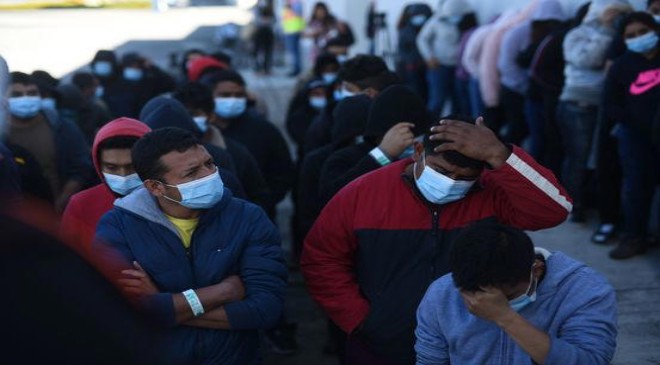The Biden administration is expanding its use of a pandemic-era border measure known as Title 42 to begin rapidly expelling migrants from Cuba, Haiti, Nicaragua and Venezuela, while opening a new legal path for up to 30,000 migrants from those countries to enter the U.S. each month.
Read More:-Why 250 Million People Celebrate Christmas in January
The new policy represents the broadest effort yet that the Biden administration has undertaken to deter migrants seeking asylum from crossing the border illegally. It also relies on an expanded use of Title 42 as a border-control measure, even while the administration is arguing in court that the measure is no longer justified on public-health grounds and must end. The Supreme Court is set to hear oral arguments on Title 42 in February.
The new program will require migrants hoping to seek asylum in the U.S. to be paired with financial sponsors and would give applicants two years of humanitarian protections, under which they can work legally and apply for asylum.
Also Read –15 Benefits of Facebook Marketplace for Business
Over the past year, migrants from these countries have made up a majority of those allowed to remain in the U.S. to seek asylum, and they have posed a particular challenge for the U.S. government because the governments of Cuba, Nicaragua and Venezuela have largely refused to take back their own citizens. Until recently, Mexico has also refused to take back migrants of those nationalities under Title 42.
Mexico has agreed in turn to take up to 30,000 migrants from the four countries under Title 42, meaning if the number of migrants crossing illegally exceeds that monthly cap, they will be allowed to remain in the U.S. to pursue asylum cases.
Also Read – China’s Foreign Minister Says ‘Deeply Impressed’ With Americans
As of Thursday, any migrants who cross the borders of the U.S., Mexico or Panama illegally will be ineligible for the humanitarian program.
The announcement comes days before Mr. Biden heads to Mexico City to meet Mexican President Andrés Manuel López Obrador and Canadian Prime Minister Justin Trudeau in Mexico City for the North American Leaders’ Summit. He is also expected to make a visit to El Paso, Texas, on Sunday to address border enforcement and meet with local officials.
The program will build on a policy, announced last October, where some Venezuelan migrants could apply to enter the U.S. legally, provided they had a financial sponsor, and Venezuelans caught at the border were rapidly expelled under Title 42. That policy resulted in a approximately 90% drop in Venezuelan migrants attempting to cross the border illegally.
It isn’t clear, though, that the program will work on a larger scale. Approximately 70,000 migrants from the four countries have crossed the border each month this fall, according to data from U.S. Customs and Border Protection, meaning demand is likely to exceed the 30,000 monthly cap for legal entry.
Also Read – Eric Omondi Goes After Stivo Simple Boy’s Management
Immigration advocates will likely decry the new policy, saying it shirks the nation’s asylum obligations for all but a sliver of preselected migrants.
Republicans and advocates who favor restricting immigration, meanwhile, are likely to oppose the policy because it represents a massive expansion of an immigration power known as humanitarian parole, which allows the government to let in people without visas, circumventing existing visa limits.
Read More:-OnePlus 11 5G and Buds Pro 2 will be available in China on January 9th
In addition to the new policy for the four nationalities, administration officials said they plan to increase use of another tool called expedited removal to rapidly deport any migrants who can’t be sent back to Mexico under Title 42.
Officials said the Department of Homeland Security has already been increasing its air and ground transportation to more quickly deport migrants or to transport them to less congested parts of the border sectors for immigration proceedings. The department—along with the Justice Department—is also scaling up the number of asylum officers and immigration judges to review asylum cases more quickly. Right now, a migrant who asks for asylum at the border can be in the U.S. for three to five years before an immigration court rules on their case.
Also Read – How Tesla, Google and Others Are Making Robots More Like Us
The administration said it also plans to triple resettlement through the U.S. refugee admissions program for refugees from Latin America, a program that provides refugees resettled in the U.S. with permanent residency and benefits including Medicaid, food stamps and cash assistance. But in the government’s 2022 fiscal year, just about 2,500 refugees were resettled from the region, according to State Department data. Tripling that number is unlikely to have a significant impact on the border.

























